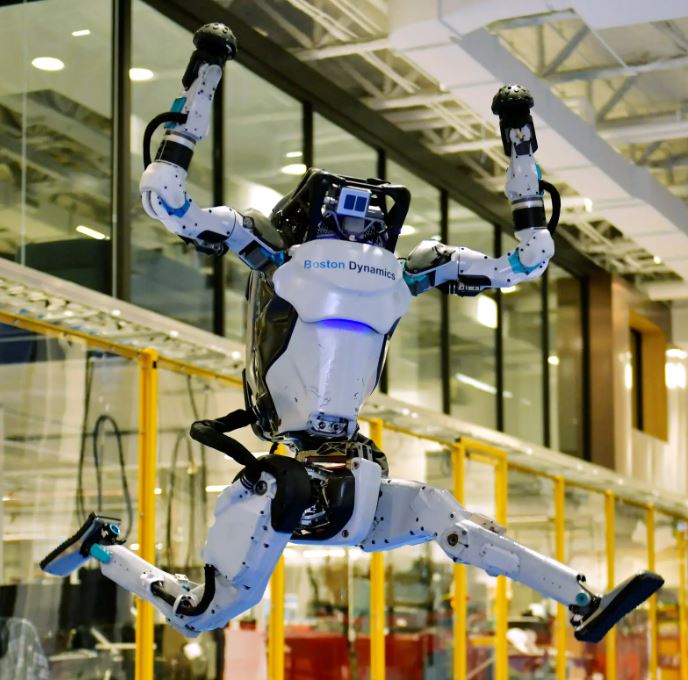After more than a decade of captivating audiences with its outdoor running, awkward dancing, and acrobatic backflips, Atlas, the humanoid robot, has been retired by its creator, Boston Dynamics. In its place emerges the next generation of humanoid robots, with the introduction of a fully electric robot also named Atlas, designed for real-world commercial and industrial applications.
The retirement of the original Atlas does not mean an end to its existence; rather, it will be relocated to Boston Dynamics’ “robot retirement home,” which is essentially a museum within the company’s office lobby, where decommissioned robots are displayed.
Originally developed for research purposes, the old Atlas played a pivotal role in exploring full-body mobility and pushing the boundaries of robotics. It was not intended for commercial use and was initially created as part of a competition aimed at advancing the capabilities of robots in both natural and man-made disaster scenarios, under the auspices of the Defense Advanced Research Projects Agency (DARPA) of the Pentagon.
In a farewell video shared on social media, Boston Dynamics paid tribute to the iconic robot, acknowledging its role in sparking imagination, inspiring future generations of roboticists, and overcoming technical challenges in the field. The video showcased various feats of the brawny 6-foot-2 machine, from leisurely strolls in grassy fields to lifting heavy boxes and navigating rocky terrain. However, it also captured some of the robot’s mishaps, including frequent stumbles and instances of hydraulic fluid leakage.
The new iteration of Atlas features a sleeker design with a round head that can rotate fully, along with reversible hips that enhance its agility and flexibility. Unlike its predecessor, this model is intended for practical applications in commercial settings.
Boston Dynamics’ commercial lineup already includes Spot, a four-legged robot known for its agility, and Stretch, a versatile warehouse platform. The introduction of the new Atlas underscores the company’s commitment to delivering highly capable mobile robots to tackle complex challenges across various industries.
Partnering with Hyundai Motor Company, which acquired Boston Dynamics, the new Atlas will contribute to the advancement of automotive manufacturing capabilities. This collaboration aims to leverage the robot’s capabilities to enhance efficiency and productivity in automotive production processes.
The original Atlas made its public debut in 2013 in Waltham, Massachusetts, where Boston Dynamics is headquartered. Initially funded by DARPA, the company received a $10.8 million contract to develop Atlas for the DARPA Robotics Challenge. The challenge aimed to spur innovation in robotics by tasking teams with creating robots capable of navigating and performing tasks in disaster scenarios.
Throughout its development, Atlas underwent multiple updates, with each iteration featuring improvements in design and functionality. Teams competing in the Robotics Challenge used these updated models as the basis for their entries, showcasing the versatility and adaptability of the humanoid robot.
Despite its retirement, the legacy of the original Atlas lives on, serving as a testament to the advancements in robotics achieved over the past decade. As Boston Dynamics ushers in a new era with the introduction of the next-generation Atlas, the company continues to push the boundaries of what is possible in the field of robotics, paving the way for innovative solutions to real-world challenges.

